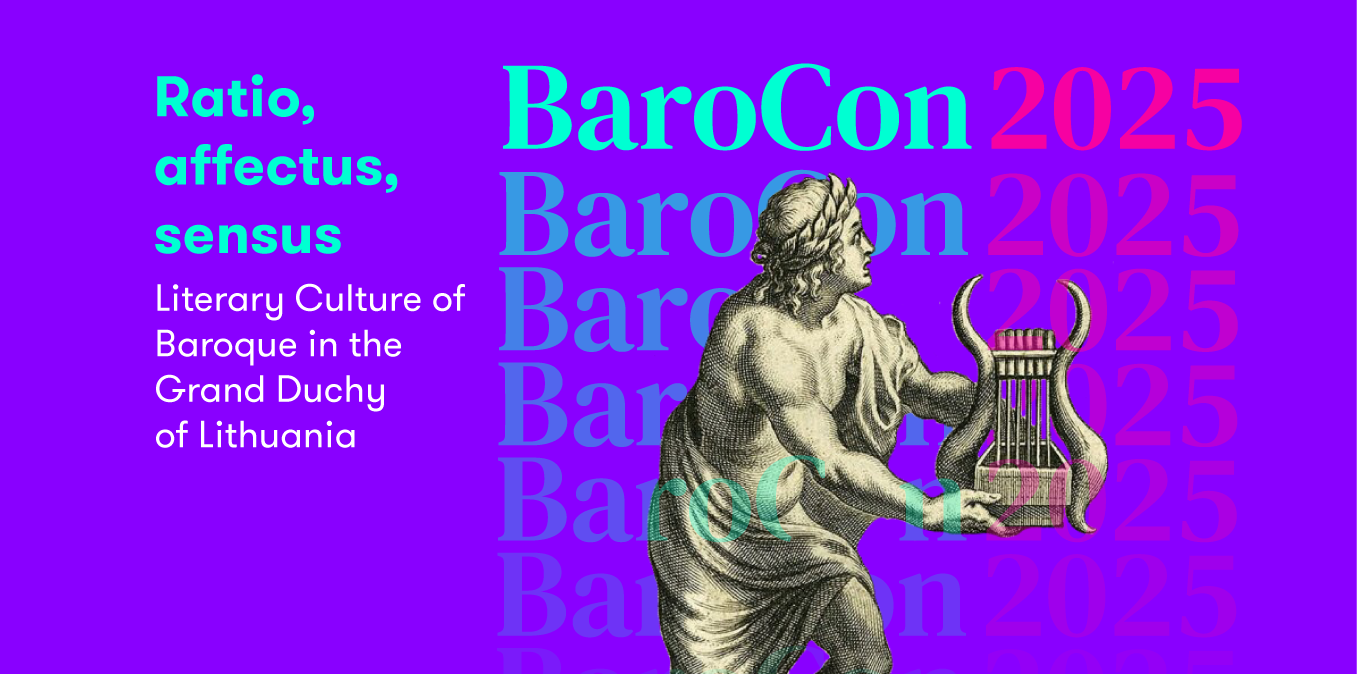Ratio, affectus, sensus: Literatūrinė baroko kultūra Lietuvos Didžiojoje Kunigaikštystėje
Prieš 400 metų buvo pirmąkart buvo išleistas garsiausias Motiejaus Kazimiero Sarbievijaus lotyniškos poezijos rinkinys Lyricorum libri tres (1625 m.), dėl to 2025-ieji metai Lietuvoje paskelbti Baroko literatūros metais. Abiejų Tautų Respublikos neolotyniškasis jėzuitų poetas Sarbievijus buvo vadinamas krikščioniškuoju arba sarmatiškuoju Horacijumi. Jo teorinės mintys apie poeziją ir retoriką tebėra vertinamos ir įkvėpia vis naujus Baroko literatūros ir autorių tyrimus, tad šis jubiliejus suteikia galimybę patyrinėti Baroko literatūrinės kultūros mastą ir įvairovę, kuri pastaraisiais dešimtmečiais sulaukė didelio susidomėjimo tiek akademiniame pasaulyje, tiek populiariojoje kultūroje. Šia proga Lietuvių literatūros ir tautosakos institutas bei Vilniaus universiteto Filologijos fakultetas rengia tarptautinę mokslinę konferenciją „Ratio, affectus, sensus: Literatūrinė baroko kultūra Lietuvos Didžiojoje Kunigaikštystėje“, kuri vyks 2025 m. rugsėjo 25–27 d. barokiniame Vilniuje.
Daugiadisciplininės konferencijos tikslas – paskatinti diskusiją apie „ilgojo XVII a.“ (nuo XVI a. pabaigos iki XVIII a. vidurio) literatūrinę kultūrą Lietuvos Didžiojoje Kunigaikštystėje. Šis istorinis laikotarpis, susijęs su dramatiškais pokyčiais ir visuotine kultūros krize, dažnai apibūdinamas prieštaringai, nuolatinėje įtampoje tarp proto ir jausmų, griežtos struktūros ir aistrų bei pan. Atsižvelgdami į šį prieštaravimą, kviečiame nagrinėti Baroko literatūrą ir jos raišką per dinamiškos proto (ratio), emocijų (affectus) ir jausmų (sensus) sąveikos prizmę, kurią galima įžvelgti įvairiuose šio laikotarpio žanruose ir vėlesnėje jų recepcijoje, išlaikančioje barokinę dvasią.
Kviestiniai pranešėjai

Ona Dilytė-Čiurinskienė
Vyr. mokslo darbuotoja, LLTI
Prof. Stephen Harrison
Oksfordo universiteto profesorius
Viktorija Vaitkevičiūtė
Images of the Townspeople in the Funeral Sermons of Lutheran Preacher Andrzej Schönflissius
Viktorija Vaitkevičiūtė
Martynas Mažvydas National Library of Lithuania
Images of the Townspeople in the Funeral Sermons of Lutheran Preacher Andrzej Schönflissius
Keywords: Funeral sermons, Andrzej Schönflissius, Lutherans, townspeople, Baroque rhetoric
In the Grand Duchy of Lithuania, the sermon genre flourished during the Baroque era. Among the various types of sermons, funeral sermons dominated, and the demand for them grew with the popularity of pompa funebris (funereal pomp). Baroque Catholic preachers usually said sermons addressed to rulers and nobles, but very rarely for non-noble persons. The preacher Andrzej Schönflissius (1590–1654) was particularly well-known in the large Lutheran community of Vilnius in the first half of the 17th century. At present, 15 of his funeral sermons are known, which were said after the death of various townspeople (merchants, barbershops, apothecaries, etc.) and their family members. Like many funeral sermons, it also presents an image of the good death, but Schönflissius' sermons differ from other Catholic, Unitarian or Orthodox sermons of the time because they usually have a separate section called "Personalia", where he discusses the person separately, using the facts of his real life. The aim of the report is to look at how the image of the simple man is constructed, what rhetorical devices are used, and how it relates to the Baroque image of a pious citizen, also how the preacher seeks to influence the feelings of the addressee.

